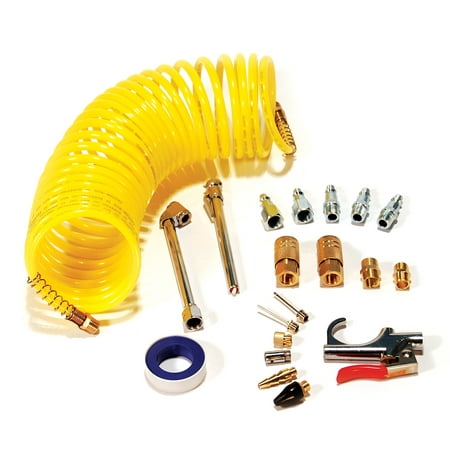Milwaukee 46 in. 16-Drawer Steel Tool Chest and Rolling Cabinet Set, Textured Red and Black Matte
Angle Iron Reinforced Frame. Industrial Casters. 100lbs Soft-Close Drawer Slides.
Keep your workshop clean with the Milwaukee 46 in. 16-Drawer Tool Chest and Cabinet Set in Red. Designed for both hobbyists and professional craftsmen, it is built with a heavy-duty 20-Gauge all-welded steel construction to offer increased durability. This tool storage system has a textured powder coat paint finish to increase resistance to corrosion, weather and staining. It is designed with a lid that features gas struts for improved safety when opening and closing. It has a shelf and a tray, allowing for complete customization of your garage organization system. This Milwaukee tool cabinet is designed with 16-drawers, 7 small, 6 medium and 3 large and features a total holding capacity of 27223 cu. in. providing the perfect storage solution for all of your equipment. Excellent for smooth operation, it is made with ball bearing slides that can hold up to 100 lbs. to accommodate heavy loads. This tool storage system comes with a computer drawer which provides a secure place to hold your laptop while you are working and slides away to safely store it while not in use. Ideal for keeping your tools secure, it is made with a 3-barrel key locking system so it will offer you peace of mind. This Milwaukee tool cabinet utilizes polypropylene fixed and swivel casters that can support up to 1800 lbs. and has 3 rounded tubular handles, making it easy to maneuver around.
- Tool chest drawer dimensions: 2 left drawers: 25.8 in. W x 15.9 in. L x 1.7 in. H; 1 left drawer: 25.8 in. W x 15.9 in. L x 2.8 in. H; 1 left drawer: 25.8 in. W x 15.9 in. L x 2 in. H; 2 right drawers: 13.5 in. W x 15.9 in. L x 1.7 in. H; 2 right drawers: 13.5 in. W x 15.9 in. L x 2.8 in. H
- Cabinet drawer dimensions: 1 top full-width drawer: 41.7 in. W x 15.9 in. L x 3.9 in. H; left side: 1 drawer: 25.8 in. W x 15.9 in. L x 2.8 in. H; 1 middle drawer 25.8 in. W x 15.9 in. L x 7 in. H; 1 bottom drawer: 25.8 in. W x 15.9 in. L x 10.2 in. H
- Cabinet right side drawer dimensions: 2 drawers: 13.5 in. W x 15.9 in. L x 2.8 in. H; 1 middle drawer: 13.5 in. W x 15.9 in. L x 7 in. H; 1 bottom drawer: 13.5 in. W x 15.9 in. L x 10.2 in. H
- Ball bearing slides with a weight capacity of 100 lbs.
- Lined drawers protect against scratches and spills
- Drawers include a soft-close function for a smoother feel
- 20-Gauge steel construction makes the chest extra rugged
- Provides 27,223 cu. in. of total storage capacity
- Weight capacity of 1,800 lbs.
- Drawer glide capacity of 100 lbs.
- Computer drawer can be used to safely store, charge and even work on your computer as required
- Work surface provides a convenient place to set your tools down
- Pegboard included for better tool organization options
- Lid that features gas struts ensures smooth opening and closing
- Has 3 rounded tubular handles, so it can be moved around the workshop with ease
- Packaged dimensions: (product comes in 2 separate boxes): chest: 50 in. W x 28 in. H x 22 in. D; weight approximately 185 lbs.; cabinet: 50 in. W x 34 in. H x 22 in. D: weight approximately 249.7 lbs.
- Total height of unit with chest lid open is 78.3 inches
Additional information
| Nominal Width (in.) | 46 |
|---|---|
| Product Depth x Height x Width (in.) | 18.2 x 62.5 x 49.25 |
| Manufacturer Warranty | 3 Year |





![[Upgraded] Car Vacuum Cleaner, ANKO High Power DC12-Volt Wet&Dry Handheld Auto Vacuum Cleaner with 16.4FT(5M) Power Cord, 2 Filters, 3 different attachments and One Carrying Bag. (BLACK-1 PACK) [Upgraded] Car Vacuum Cleaner, ANKO High Power DC12-Volt Wet&Dry Handheld Auto Vacuum Cleaner with 16.4FT(5M) Power Cord, 2 Filters, 3 different attachments and One Carrying Bag. (BLACK-1 PACK)](https://i5.walmartimages.com/asr/1943514b-8027-4645-b03e-1f5ddae97168.bb789a7ebe5d39160b396ea405d4cc3b.jpeg?odnHeight=450&odnWidth=450&odnBg=ffffff)
by Smitty
Excellent mate to the 61″ tool chest!
by Reen
Heavy duty construction for this tool chest. Very well made !! Quality is top notch Lots of storage ! I highly recommend this Tool Chest !
by Josh
Excellent tool box for the money. Drawers are deeper than the other comparable boxes so you can actually put some tools in it.